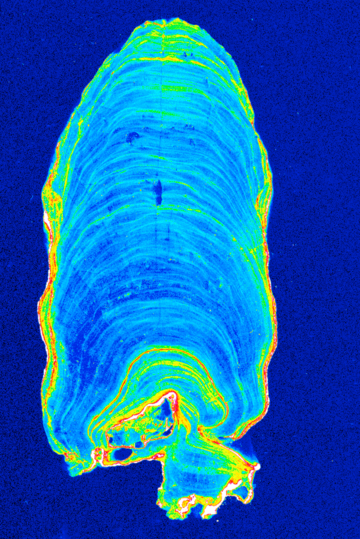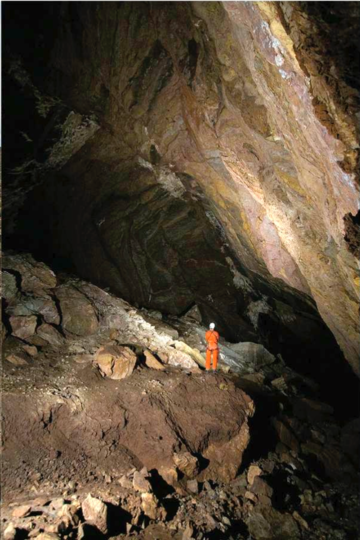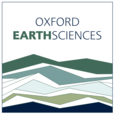Environmental Proxies in Karst (EPIK)
Research Group
The Environmental Proxies In Karst group, led by Dr Chris Day, develops and applies proxies for understanding environmental processes in the top few tens of meters of the Earth’s surface. This small subset of the Earth’s geology is extremely active, key to many major environmental cycles such as the carbon cycle, the water cycle, physical & chemical weathering and is therefore often referred to as the Critical Zone. We focus primarily on karstic regions, where we use secondary calcium carbonate deposits (known as speleothems) to record and reconstruct changes in the environment (e.g. rainfall amount, vegetation properties, weathering intensity) over thousands to millions of years.
A key component of our work is the development of experiments in which we grow minerals under carefully controlled laboratory conditions. These experiments are careful to closely follow the natural mechanisms of mineral formation, whilst controlling the composition of the fluids and the environmental parameters (e.g. temperature, fluid flow rate, gas compositions) in which these minerals form. Together with our collaborators, we help to calibrate the use of trace-elements for reconstructing relative changes in rainfall amount & temperature and we develop novel proxies such as the use of Ca-isotopes for reconstructing absolute changes in rainfall amount.
We apply these proxies for reconstructing environmental-conditions and climate in e.g. Chile, Morocco and China. In addition, work is ongoing in the Stable Isotope lab & others to develop new ways of measuring stable isotopes in view of improving environmental and palaeoclimate reconstruction.


People
May 2025: Beta version of CaveCalcV2.0 is released and is available to download from github (https://github.com/Samhollowood/CaveCalcv2.0). Contact samuelhollowood@bnc.ox.ac.uk for any questions
July 2022: Congratulations Dr Hamish Couper and Dr Chris Theaker for both passing your vivas with minor corrections. A huge thanks to all of the examiners for your help and involvement: Franzi Lechleitner, David McGee, Stuart Robinson, Gideon Henderson.
June 2022: Congratulations Sam Hollowood on your excellent results for your 4th year project, including winning the EarthScience-MetOffice Academic Partnership (MOAP) prize for an outstanding 4th year project on a climate-related topic.
April 2022: Congratulations to Hamish Couper and to Chris Theaker for completing your DPhil dissertations. Very nicely done indeed.
March 2022: A big congratulations to Samuel Hollowood on securing a position on the Oxford DTP programme for next year.
August 2021: Stalagmite climate science is in the media again, with this nice article by Emma Bryce about Prof. Gina Moseley‘s work with stalagmites, that Gina and her team have recovered from northeast Greenland. Gina is using these samples (some dating back to 588,000 years ago) to recover key information about our environment during warm periods in the past.
March 2021: Our latest publication on Li isotopes (together with Philip Pogge von Strandmann and Andrew Mason) has been accepted for publication with GCA. Entitled “Lithium isotopes and partition coefficients in inorganic carbonates: proxy calibration for weathering reconstruction” the pre-proof is available here.
March 2021: Congratulations to William Hawkes on his successful application for a NERC Scenario DTP project with Renee Lee (University of Reading), Fabio Nudelman (University of Edinburgh) and the Environmental Proxies group here in Oxford Earth Sciences. Looking forward to working together on joint biology-geochemistry topics.
December 2020: Happy to hear that Dr Gül Surmelih’s Marie Sklodowska-Curie Actions Fellowship (AQUEA) project now has a starting date in August 2021. Looking forward to working with Gül, with Prof. Andrew Wilson and other colleagues, making use of geochemical measurements from aqueduct samples for reconstructing environmental change applicable to Roman archaeology. Congratulations Gül on your fellowship.
November 2020: NERC Scenario DTP project available for 2021. Supervised by Dr Renee Lee, co-supervised by Dr Chris Day and Dr Fabio Nudelman. Full details are available here.
June 2020: Thanks to NERC and to NEIS for supporting Chris Theaker’s research by awarding him with support for radiocarbon measurements at the National Environmental Isotope Facility. Chris Theaker will use these measurements as part of his work into developing historic reconstructions of ENSO variability using a stalagmite sample from Borneo (more details to follow in due course). Congratulations Chris for your successful application.
Dec 2019: The Environmental Proxies Group is very grateful to the John Fell Fund for financial support relating to a series of updates and developments of the ‘Oxford Cave’ laboratory setup. This will significantly increase the experimental output of this setup for a growing number of internal and collaborative projects. We look forward to reporting on the outcomes of these experiments and to supporting additional collaborations in the years to come.
Feb 2019: Eos Buzz Newsletter: The Akkadian Empire—Felled by Dust? Chemical measurements of a stalagmite from a cave in Iran reveal a large uptick in dust activity in northern Mesopotamia roughly 4,200 years ago, coincident with the decline of the Akkadian Empire.
Dec 2018: Congratulations to Hamish Couper for winning the “Elsevier Travel Grant for effective communication and clearest exposition of work” at the NERC DTP conference! The grant is much appreciated in supporting his ongoing fieldwork in North Africa.
Current Members
Chris Day, Group leader (proxy development, environmental and climate reconstruction)
Samuel Hollowood, DPhil (Improved quantification of past climates using speleothem material from North Africa and Chile)
Stacy Carolin, University of Oxford (palaeoclimate reconstruction projects)
Collaborators and Research Partners (University, nature of collaboration)
Tobias Kluge, University of Heidelberg, clumped isotopes in speleothems
Renee Lee, University of Reading, biology in caves
Yves Krüger, University of Bergen, liquid-vapour homogenization (palaeo-temperature reconstruction)
Anna Nele Meckler, University of Bergen, liquid-vapour homogenization (palaeo-temperature reconstruction)
Gideon Henderson, University of Oxford, proxy and palaeoclimate reconstruction projects
Philip Pogge von Strandmann, University College London, Li isotopes in speleothems as a proxy for weathering intensity
Franziska Lechleitner, ETH Zurich, Carbon isotopes in speleothems
Past Members
Rob Owen (DPhil, speleothem Ca-isotope proxies for absolute rainfall reconstruction, CaveCalc Karst modelling software development, 8pt2 kyr climate reconstruction)
Julia Barrott (DPhil, palaeoclimate reconstruction in Morocco)
Christopher Theaker, DPhil (Developing proxies in secondary carbonates with application to ENSO variability and basin-wide paleo-hydrology)
Hamish Couper, DPhil (Reconstructing the timing and location of North-West Saharan rainfall with spatially distributed secondary carbonates)
June 2025: CaveCalcV2.0 is now available for early testing. The Karst Record (KR10) presentation given by Samuel Hollowood can be found here:
July 2022: Aragonite fractionation factors from our cave-analogue experiments are published in the 2021 GCA article “Lithium isotopes and partition coefficients in inorganic carbonates: Proxy calibration for weathering reconstruction”. These fractionation factors can be calculated from tables 1 and 2 of the article, available at doi.org/10.1016/j.gca.2021.02.037 or they are calculated and compared with other studies here: EPIK_aragonite_out.pdf




